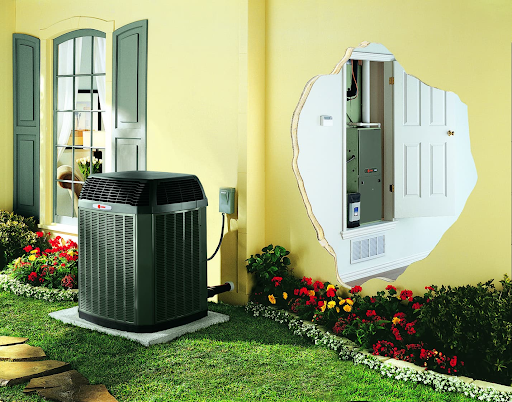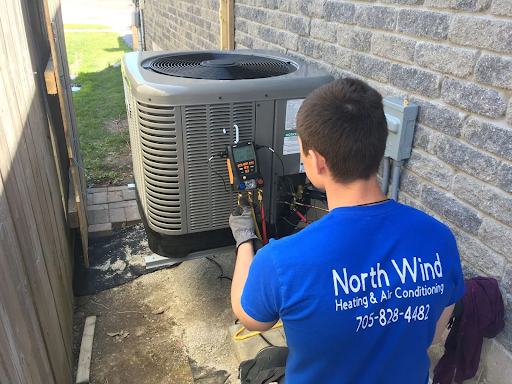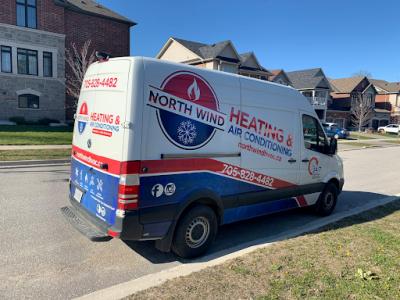Modern ventilation, heating and cooling control systems are not only a new quality in comfort syst., but also a significant element in reducing energy consumption.
Installations ensuring the feeling of thermal comfort in rooms, regardless of external conditions, have already become a standard element in currently commissioned and modernized buildings.
To meet industry standards, experts recommend following a proven HVAC maintenance checklist. It helps people maintain optimal system performance, energy efficiency, indoor air quality, equipment longevity, regulation compliance, safety, and cost savings.
This covers several aspects of the overall system. For example, it’s essential to look for discrepancies between the displayed and actual room temperatures and recalibrate if necessary. That helps you control your actual consumption and regulate the HVAC’s performance.
Likewise, including control system checks in this list helps ensure its proper functioning and enhances the overall performance of the HVAC system.
The simplest control system is on/off control, where the HVAC equipment operates either at full capacity or turns off completely. It uses a basic thermostat to sense the temperature and signal the system to turn on or off accordingly.
There is a move away from manual control of individual elements of HVAC, i.e. ventilation, heating and cooling. Suppliers also try to make it easier for their users to use the syst. through remote access to settings, e.g. using mobile applications.
Historically, the first HVAC controllers were pneumatic. Then, electromechanical relays were used to switch the throttles, which in turn were replaced by electronic switches when the transistors could handle higher current loads.
It is assumed that in the mid-80s of the last century, pneumatic control could no longer compete with new technologies, and by the year 2000, controllers that already used computer-related technologies were widely used. Proper selection of appropriate devices and controls allows you to build a syst. not only meeting the assumptions, but also economical.
There are many companies on the market that specialize in the preparation and implementation of HVAC. For over ten years on the market, we have seen an increasing integration of HVAC with other building automation syst. Increased use of analytics in controlling and managing energy expenditure and the use of the Internet, as well as cloud computing.

Currently, in the process of preparing new investments or modernizing buildings, attention is paid not only to the cost of installation and commissioning of individual elements, but also to the total cost of ownership of HVAC throughout the life cycle of the building.
Therefore, intelligent control systems that monitor and optimize energy expenditure are in demand. Thanks to the recording and processing of historical data, energy consumption trends can be monitored, and notifications and alarms about the syst. status can be sent to prevent syst. failures and costly repairs.
Table of Contents
Solutions
Currently, direct digital control (DCC) systems are used to control HVAC, in which a digital controller, for example, a PC, directly controls executive devices such as valves, flaps, etc. Groups of DDC controllers can be networked or operate independently They connect to the building automation syst. and sometimes it is the BAS that directly controls the HVAC components.
BAS integrates multiple control systems into a centralized platform, including HVAC, lighting, security, and more. It provides a high level of automation and monitoring of various building systems, allowing for energy optimization and improved occupant comfort.
On the other hand, variable air volume (VAV) control systems regulate the air supplied to different zones based on their heating or cooling requirements. Each one has a damper that adjusts the airflow. The VAV system modulates the fan speed or capacity accordingly to maintain their desired temperature.
Along with the development and popularization of the concept of an intelligent and green building, various, until recently separate, building automation systems exchange information with each other and are centralized.
For example, HVAC connects to Home Automation and Building Management Systems (BMS) for centralized control and monitoring. At the same time, this allows you to resign from complex and more expensive syst. for effective control of only the elements of ventilation, heating and air conditioning.

Controlling the operation of the installation, including remote control, must take into account various factors, especially if you also want to optimize energy consumption. Therefore, the syst. must take into account, apart from the parameters in the room, such as: temperature, humidity, concentration of pollutants and carbon dioxide level, also the weather outside and forecasts of its changes, time of day, the number of people using the rooms, etc.
Each facility and installation is different, for example, the course of the combustion process in the boiler.
In summary, today’s typical HVAC control syst. consists of distributed controllers that can control various processes in a building or group of buildings from a central host PC, or over the internet from a unit that combines the functions of a host PC and a web server.
Especially the presentation syst. is today most often a web client, i.e. a solution available from the browser, without the need to install additional software. It enables visualization of the installation and monitoring of its operation setting and administration of alarms and notifications.
In practice, the user, in addition to basic data, receives information about trends (variation over time) of various parameters, and can create reports, e.g. on energy expenditure, etc.
In many controllers, intelligence is sewn in for independent operation, for example in the absence of communication with the central unit In modern solutions, syst. configuration can be performed on a workstation, offline computer, HMI terminal or, increasingly, on devices connected to the syst. via the Internet, including mobile devices such as a tablet or smartphone with an appropriate application installed.

Commercial HVAC BUY SERVICE INSTALLATION Heating and cooling Toronto and Barrie
Now you know how the HVAC is arranged and how it works, its types and advantages. It remains only to decide on a company that will help you with this.
One such firm is North Wind Heating and Air Conditioning, a top company that professionally installs HVAC systems in Toronto and Barrie. She specializes in the installation and maintenance of local businesses, for quite a long period.
Company advantages
- Professionalism.
- Fulfillment of orders in a short time.
- 10 years parts guarantee, 2 years labor guarantee.
Want to buy HVAC? Follow the link https://northwindhvac.ca, get all the necessary information from North Wind Heating and Air Conditioning specialists and the installation of this equipment in the near future.
















